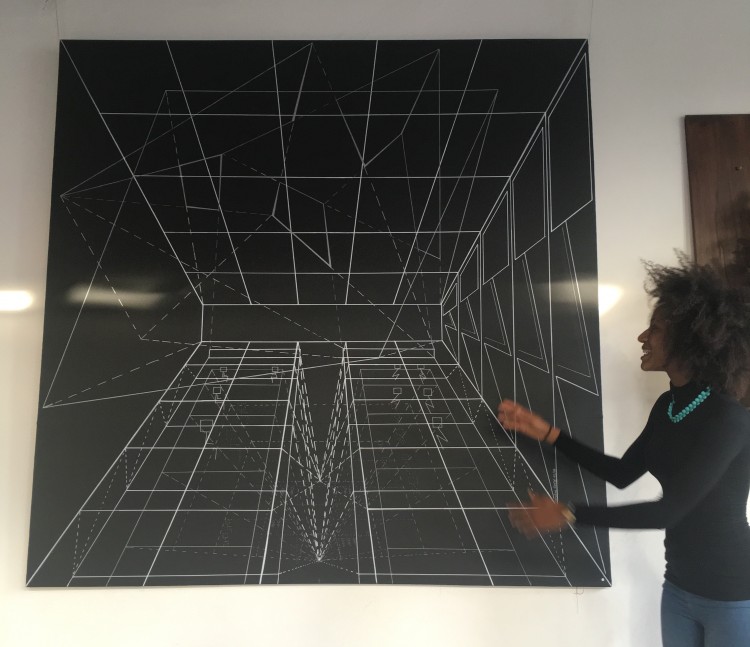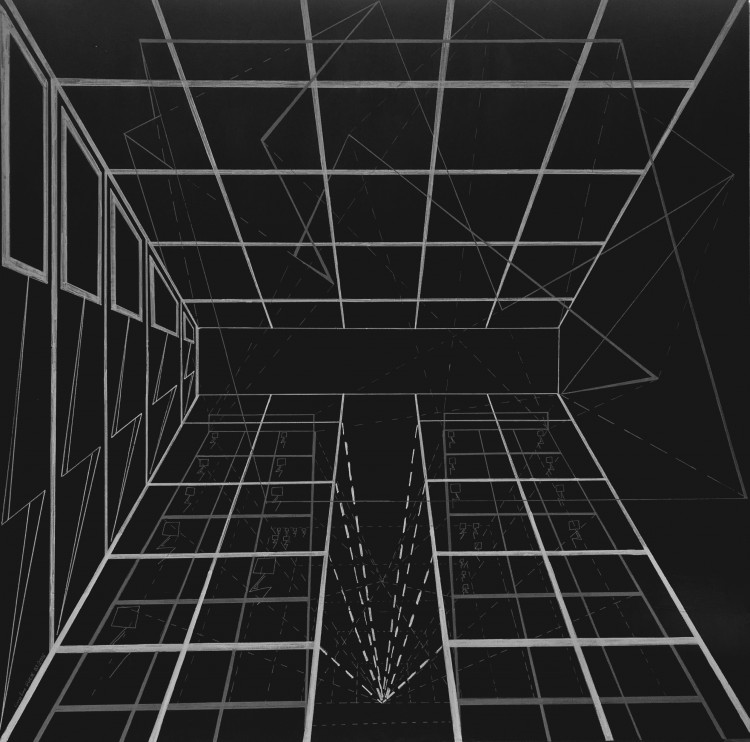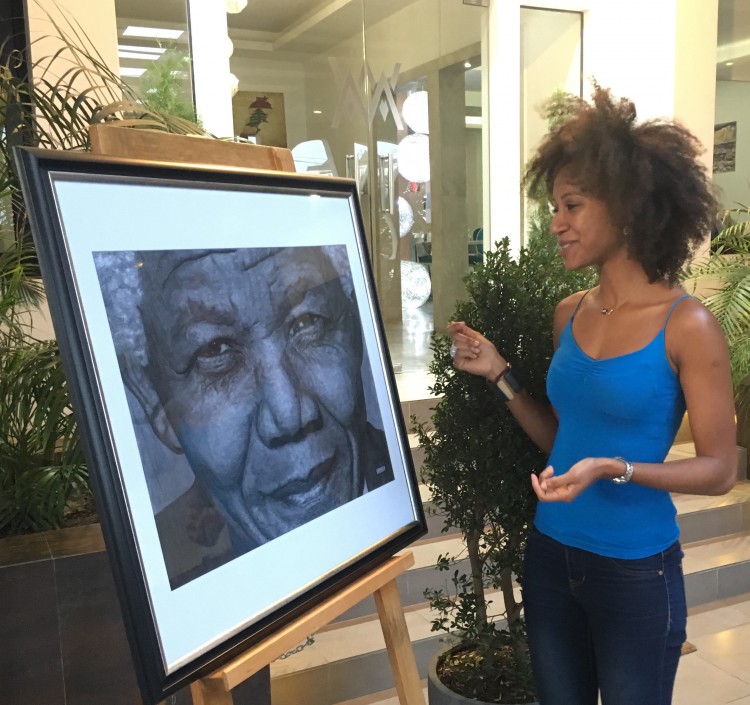As Africa’s middle class starts to emerge, propelled by growth and urbanisation, many diaspora Africans are choosing to return to the continent.
Many of these returnees, known as ‘repats’, are highly educated and skilled, and while they choose to take a chance on new opportunities back ‘home’, the process of adjusting to mentalities and business practices can be brutal.
It’s quite a leap of faith to shift from a promising international career in applied astrophysics to the precarious lifestyle of a visual artist in downtown Dakar.
‘I like to mix science with art.’
29 year-old Caroline Gueye is an astrophysicist and engineer who finds inspiration in string theory, loop quantum gravity, quantum mechanical principles and quantum electrodynamics. No wonder she chose to launch her new career as a painter with large scale, monochromatic, mostly geometric images that seem effortlessly rendered with acrylic paints. ‘I like to mix science with art,’ she said during an interview on the eve of her latest exhibition, Inflation Cosmique, currently at the Dakar Biennale. ‘These are sober artworks that make us travel in the infinity of the universe.’
As with many diaspora Africans, travel keeps informing her heritage, helping her to make sense of her hybrid identity. Caroline was born and raised in Dakar. Her father is Senegalese, from the Peul ethnic group, and her mother is the daughter of the late Togolese artist Paul Ahyi, who is best known for designing the Togolese flag and creating large outdoor paintings and sculptures all over West Africa.
When she was a child, she was always interested in science, but she also found herself drawn to drawing. Her maternal grandfather told her to keep studying, but he also encouraged her to keep playing about with those pencils. ‘In my bedroom,’ she says, ‘I did not have any posters. Instead, I hung my own drawings on the walls, they were as big as me. My parents would take me to exhibitions, and pretty soon I started going to galleries and museums on my own.’ At 12, she created her first realist painting.
She moved to France for her studies but she found herself missing certain specific aspects of everyday Senegalese culture.
At 17, after high school, she moved to France for her studies but she found herself missing certain specific aspects of everyday Senegalese culture, particularly the tea, prepared attaya-style where the tea pot is held high above the table and poured into small glasses, or the background street noise composed by local instruments such as the balafon, the kora, or the xalam.
When she finished her studies in physics, she decided to learn Mandarin, and moved, on her own, to Tàiyuán, the capital of the Shanxi province, which is about 500-kilometres east of Beijing. After two years in China, she moved again, to the United States, where she spent time in New Orleans and New York, but when it was time to get a real job, she joined the climate change team at GIZ, the German Corporation for International Cooperation.
Still, she missed Senegal, and in 2014 she decided to move back to Dakar, after a six-month stint in Burundi. ‘I was always painting on the side, because I’ve always known that I am an artist at heart, but the GIZ job was so demanding that I felt like I just wasn’t devoting enough time to my paintings. I remember feeling frustrated because I just couldn’t finish a portrait I’d been working on. That portrait was of my mother. So I quit, and decided to go back home.’
The challenge, however, was to find a market in an African city known for its many starving artists.
As a self-taught artist, she kept experimenting with techniques as she sought out a style of her own and when she got to Dakar she went from hyper-realistic portraits with pencils, to colourful abstract paintings in pastels and acrylic. Drawing from what she saw in China, she also dabbled in sketches with Chinese ink.
The challenge, however, was to find a market in an African city known for its many starving artists. ‘I am not someone who loves to socialise, and I don’t go out as much as some of my friends do,’ she says. ‘Even though I am not far from the coast, I don’t even need to go to the sea to find inspiration. I am mostly just alone, in my studio, which is located in the heart of old Dakar, and I am focused on my paintings.’
The adjustment to life in Dakar was not so easy, because everything moved at such a slow pace. ‘In Europe I was used to getting on with it,’ she admits, ‘but in Senegal the whole masla mentality got to me. It’s an expression that describes those who are constantly trying to cut corners, who don’t want to confront problems and you see it all the time in people who don’t know how to say no, which is such a time waster. I’d rather someone say no to my face, than make promises they know they cannot keep.’
She tries to reconcile the rational logic of a scientist with the many uncertainties in the artist’s life
In her early days in Dakar, Caroline faced the punishing economics of creativity head on. Because she doesn’t have a dealer fending for her, she tries to reconcile the rational logic of a scientist with the many uncertainties in the artist’s life. She was encouraged, when she sold 25 paintings at her very first exhibition, held in May 2015 at Dakar’s Galerie Kemboury and when her Mandela portrait was chosen for the business lounge at Dakar-Yoff airport. The prices are not yet Western market auction prices, but she hopes that she will, one day, be able to live off her art, just like her idols Picasso, Dali and Paul Ahyi.
Inflation Cosmique is at My Way, on the King Fahd Palace road, Almadies until May 22. Find out more at carolinegueye.com



